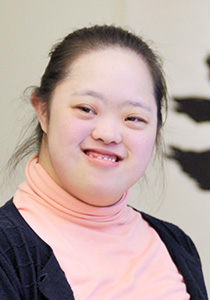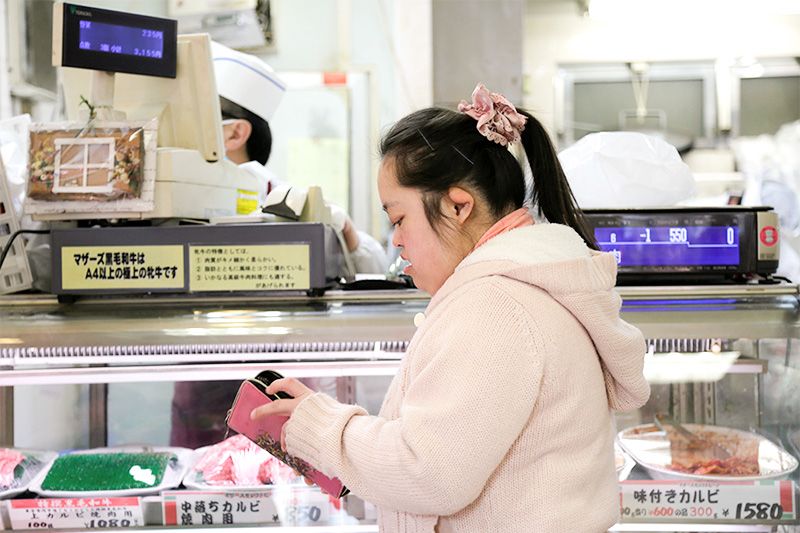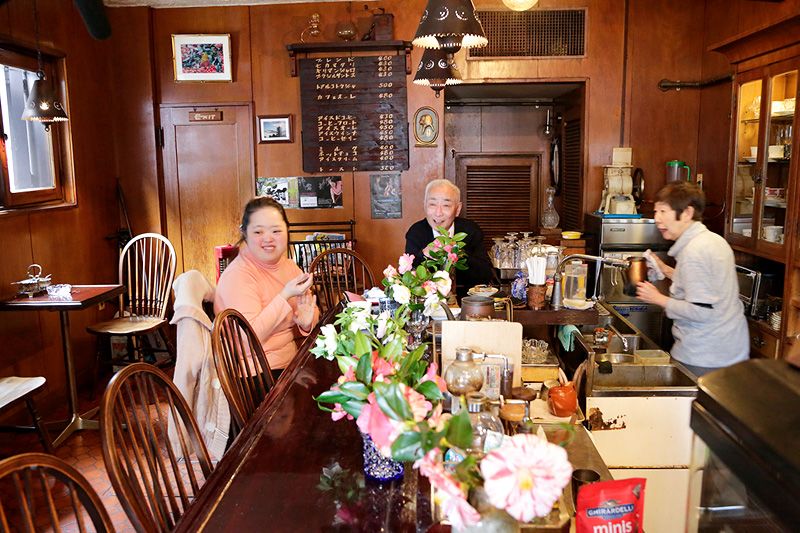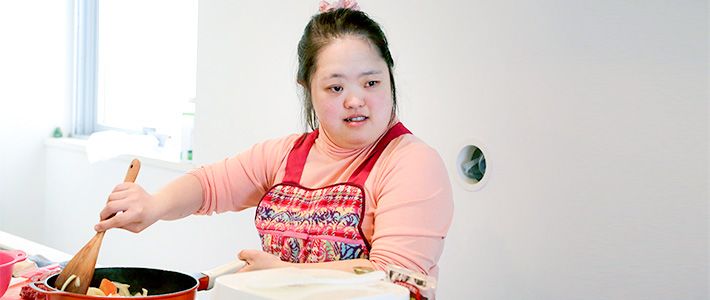
At Home With Calligrapher Kanazawa Shōko: Down Syndrome and Independence
Culture- English
- 日本語
- 简体字
- 繁體字
- Français
- Español
- العربية
- Русский
A Popular Local Character
Kanazawa Shōko is one of Japan’s top calligraphers and has had solo exhibitions in the United States, the Czech Republic, and Singapore. The 31-year-old artist, who has Down syndrome, took on another challenge 15 months ago when she left home to live by herself. On a spring-like day in early March, I visited her apartment to see how she was doing.
She met me at Kugahara Station in a quiet, residential area of Tokyo. As we walked from the station along the shopping street, Shōko exchanged smiles and greetings with the passers-by. One woman even came to shake her hand. As I walked with her, I spotted a florist featuring her photograph and calligraphy work in the window, along with a pamphlet for her autumn exhibition at the Ueno Royal Museum. The same handout was displayed in the windows of a soba (buckwheat noodle) restaurant, cake shop, beauty salon, and stationery store along the street.
Shōko had visited the stores herself, distributing two pamphlets each and asking the proprietors to display both sides. Her request certainly did not go unheard. She was a celebrity here, I thought, and everyone was eager to comply with her request.
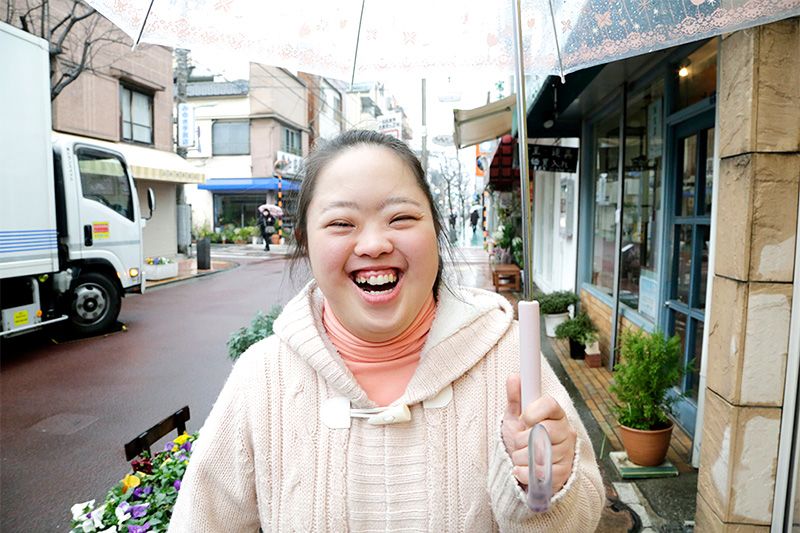 On the way to Shōko’s apartment.
On the way to Shōko’s apartment.
Shopping and Cooking for Herself
Shōko spends a lot of time traveling with her mother Yasuko around the country to make appearances at exhibitions of her calligraphy or to create new works, sometimes performing in front of audiences. But when she is in Tokyo, she always cooks her own meals. “What’s for dinner today?” I asked her. “As I have a guest, I’ll make beef stew.”
At the butcher’s, Shōko ordered: “Beef stew roux and some tasty beef, please.” She also bought carrots and onions from the store’s vegetable corner. A woman customer chatted happily to Shōko about being in the same swimming club. After she paid for her groceries, we went to Shōko’s favorite café.
The café, which opened over 40 years ago, still retains the nostalgic atmosphere of Japan in the 1970s and 1980s. While she waited for her café au lait, Shōko talked to the owner about cooking and a television program she had appeared on, and updated her social media status on her smartphone. Apparently, she visits the café almost every day, and the owner and his wife treated her like their own daughter. A local police officer calls her a magician. “She waves her magic wand and stars appear in the sky, bringing new life to the neighborhood.” I certainly agree.
The first thing visitors see when they enter Shōko’s apartment five minutes from the station is the white kitchen area, complete with an induction cooker. Shōko loves to cook. Past the kitchen is the main room of the apartment with a wooden floor. The walls are snow white and the curtains a subdued pink. The rococo dresser and desk, along with the white shelves with scattered touches of pink suggest this is a young woman’s room.
Shōko put on an apron and washed her hands, instructing me on the importance of clean hands when cooking. She peeled carrots and potatoes and chopped them with a kitchen knife. As she started on the onions, she announced, “I’ll be all right. My eyes won’t hurt.” But after a while, her eyes swelled up with tears, and she washed them instinctively with tap water.
“This is olive oil,” she explained as she began to cook. “I’ll cut the meat, so it’s easy to eat,” she continued, adding, “After the meat turns brown, I’ll add red wine.” Shōko explained each step of the way, as if she were on a cooking program. After an hour, the beef stew was done. A delicious aroma filled the room.
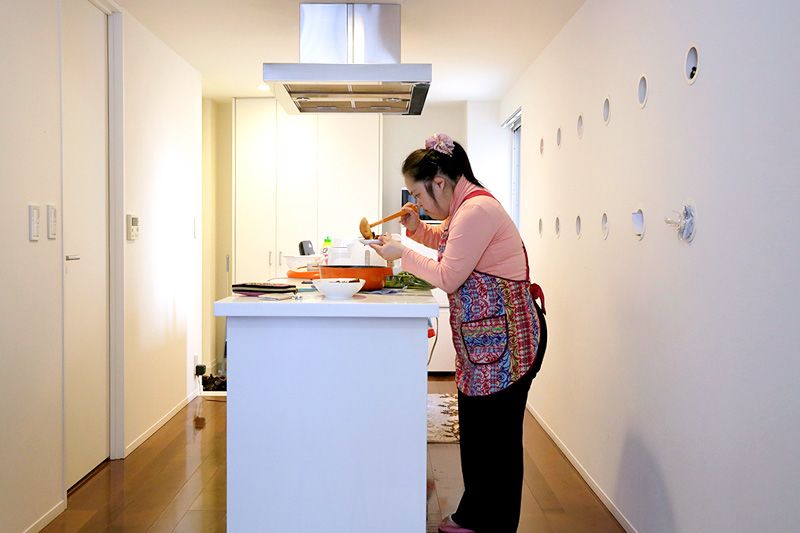 “Today’s dinner is beef stew.”
“Today’s dinner is beef stew.”
Shōko first placed the stew in a small bowl, which she set on a shelf next to a photograph of her deceased father, Hiroshi. “This is beef stew, Dad. Let’s eat it together. Thank you for watching over me from heaven,” she said with her eyes closed and her hands pressed together.
A Break From Calligraphy
I visited Shōko again the next afternoon when she was studying at home. On her desk was a book of yojijukugo (four-character idioms). She opened it to the first page and started copying the explanation for the Buddhist phrase 愛別離苦 (aibetsu riku), which describes the pain of separating from loved ones. When she was a girl, she used to copy passages from the Bible every day. This fostered her keen appreciation of words and characters.
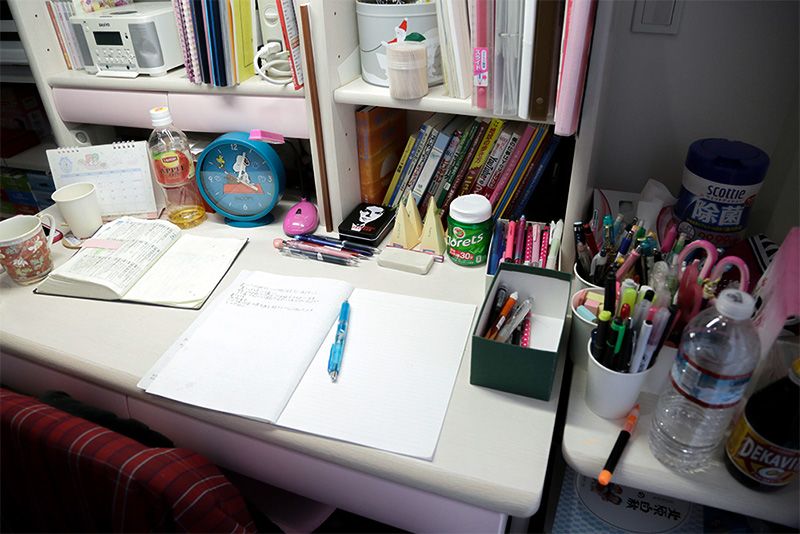 Studying four-character idioms.
Studying four-character idioms.
When study was over, it was time to relax. Shōko took out her pink iPad and started watching a video of a young school boy who won a prize for dancing like Michael Jackson. Shōko enjoys dancing to Michael Jackson songs herself. As she searched for more videos, it occurred to me that there were no calligraphy supplies in the room. The room was a space for her to take a break from calligraphy. Another important daily task for her is exercise; she has put on weight, she said, since starting to cook for herself. She worked up a light sweat on her treadmill, after which we left her apartment to visit her mother living nearby.
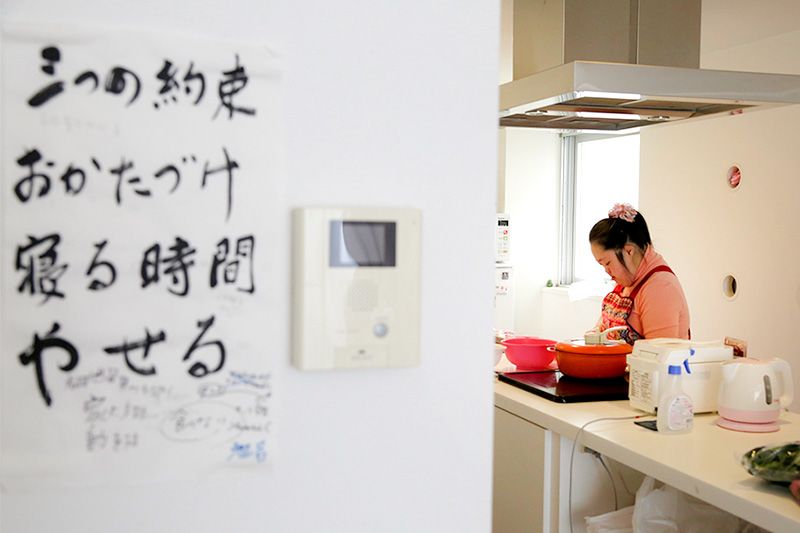 Shōko’s three vows, taped to a wall, are to keep her apartment clean, not to stay up too late, and to lose weight.
Shōko’s three vows, taped to a wall, are to keep her apartment clean, not to stay up too late, and to lose weight.
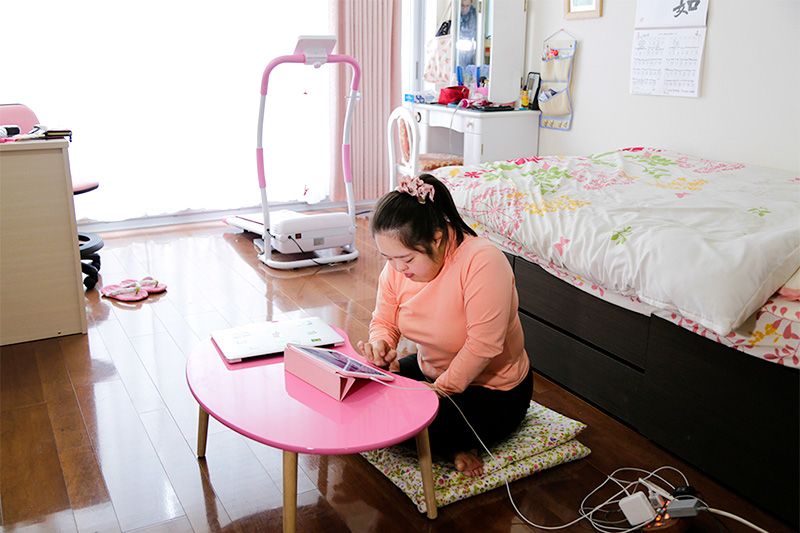 Searching for videos on her iPad.
Searching for videos on her iPad.
Supported by Her Mother’s Love
Kanazawa Yasuko teaches calligraphy classes on the first floor of the two-story family home. She took us up to the living room on the second floor. At the back of the room was a desk for calligraphy, on which lay a large piece of paper with the phrase 般若心経 (Han’nya shingyō), the Japanese name for the Heart Sutra. Shōko’s rendition of the sutra at the age of 10 was displayed in four panels on the wall behind. This version is known as the Tears Heart Sutra, because it is stained with the young girl’s tears that fell as she struggled to complete the calligraphic task. It will be part of her exhibition at Ueno Royal Museum this autumn, alongside a new version of the same piece that she is currently working on.
When calligraphy practice was over, Yasuko told me, with a touch of sadness, “It’s been fifteen months since she started living alone, and she doesn’t come home any more. When there’s no calligraphy-related work, there are times when I don’t see her for a whole week.” Shōko had announced on numerous occasions that she planned to live by herself when she turned 30, including during a presentation at the UN Headquarters in New York on World Down Syndrome Day in 2015. “It’s very hard for someone with a disability like Shōko’s to live on their own, so I was really worried,” Yasuko commented. “But it’s something she’d already announced to everyone, and I let her do it. Since she was small, I’ve been teaching her how to cook, clean, and go shopping so that she’d be able to live on her own when I’m gone. Most parents of children with Down syndrome simply assume that’s impossible, but it’s really not so.
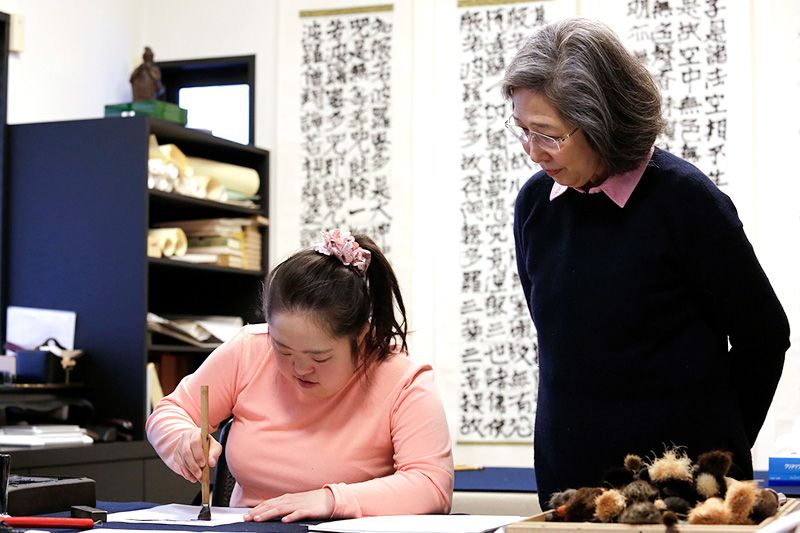 Practicing calligraphy with her mother.
Practicing calligraphy with her mother.
“Since moving out, Shōko has come to understand the importance of money. One day, she came to me to ask for a ‘salary.’ So, I said I’ll give her 5,000 yen for each piece of on-location calligraphy she completed. When she did a particularly good job, she asked if she could get 7,000 yen.”
That Shōko has been able to do the impossible of living by herself is the fruit of her own efforts and the trust and love for her mother. At the same time, it is also the result of Yasuko’s love for her daughter and her faith that a child with Down syndrome can survive alone. The two days I spent with them has taught me that there truly is no limit to what humans can accomplish.
(Originally published in Japanese on April 4, 2017. Banner photo: Kanazawa Shōko cooks dinner in her apartment. Photographs by Nagasaka Yoshiki.)